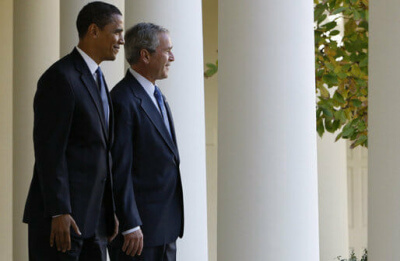Changes in Drone Policy Starting to Show Effects


George W. Bush’s fourth term is going about as well as could be expected. The United States is finalizing an agreement — not without some obstacles — to keep troops and the federal checkbook in Afghanistan through at least 2024. The military tribunals at Guantanamo Bay continue to Kafka along, gesturing toward due process over events that pre-date the births of this year’s crop of sixth graders. (The hunger strikes? Yeah, we’re not discussing that anymore. It’s no longer a topic, because shut up.) The administration may have lied about WMDs—welcome back to that sentence, yes?—but the publications that employ several of Barack Obama’s hagiographers as editors have doubts about mentioning the whole thing, so maybe not. And the great American air war of the twenty-first century—of the whole twenty-first century, one begins to suspect—blunders on in no particular direction.
But maybe there’s a trend to be found that resembles hope, or even hope and change. In a then-much-noted May 23rd speech that now seems to blend in with all the other meaningless rhetoric pouring out of an increasingly hapless and politically empty White House, President Barack Obama made a moral case for military restraint and sharp restrictions on deadly strikes by armed drones. “And before any strike is taken, there must be near-certainty that no civilians will be killed or injured—the highest standard we can set,” the president said. “Now, this last point is critical, because much of the criticism about drone strikes—both here at home and abroad—understandably centers on reports of civilian casualties.”
The Long War Journal, which tracks drone attacks through local news reports, has counted 22 strikes this year in Yemen, down from 42 last year. It has counted 25 attacks in Pakistan this year, down from 46 last year and a peak of 117 in 2010. A single strike has been reported in Somalia this year.
Administration officials have said drone strikes have killed relatively few civilians, but have refused to say how many. The Long War Journal says 11 civilians have been killed in Pakistan this year and two in Yemen; other estimates are higher.
(A question in passing: what would we call a foreign organization that killed 13 American civilians by firing missiles from unmanned machines that they flew over American communities?)
Helping to fill in the dark history of American drone strikes, the website Public Intelligence recently provided a detailed and careful look at the policy language of the American security state, excerpting a military document available here in a piece well worth reading for yourself.
Promulgating the rules to minimize civilian deaths in drone strikes and “other military actions,” as Public Intelligence summarizes it, an October 2012 directive from the Chairman of the Joint Chiefs of Staff carefully fudged the rules. The existing 2009 policy had contained language prohibiting the “infliction of unnecessary suffering or damage to civilian persons or property that is excessive in relation to the concrete and direct military advantage anticipated,” for example, but that sentence vanished from the 2012 policy.
And so on: “A section requiring ‘all military personnel to take reasonable precautions to ensure that only military objectives are targeted’ and ensure that civilians are not made the object of attack is changed to require only that military personnel ‘avoid targeting (i.e., attacking) civilian or noncombatant persons or objects,'” as Public Intelligence summarizes that change.
So the Pentagon softened restrictions on blowing up civilians near the end of 2012, and then the president tightened them back in May of 2013—not that we have the actual language of the president’s supposedly more restrictive rules, a reality that leaves us guessing.
Some of that guessing is downright silly. Compare the Public Intelligence piece to the reporting that came from the Washington Times, the only newspaper that had picked up the Public Intelligence item when I last checked on Tuesday morning. The Washington Times got the story precisely wrong, taking a November 2013 website posting to describe a recent policy change; misinterpreting the October 2012 date on the policy document in question, the newspaper described the less restrictive rules as a change from the new restrictions on drone strikes promulgated by the president in May: “Obama war chiefs widen drone kill box,” as the headline has it.
They haven’t. Unless the Pentagon has access to a DeLorean and Christopher Lloyd, this can’t be: a 2012 policy can’t reverse a 2013 policy.
Through all that fog, here’s the reality that seems to be poking through: American drone strikes overseas seem to actually be declining, and declining in a significant way. If we can dare to be hopeful, they even seem to be trending in the direction of zero, or something close to it: 117 drone strikes in Pakistan in 2010, 46 last year, 25 this year.
A tiny, lukewarm coal glows in the recesses of my cold, dead heart: the seemingly permanent American emergency, the eternal war of the vampire-like national security state, may perhaps be winding itself down a bit.